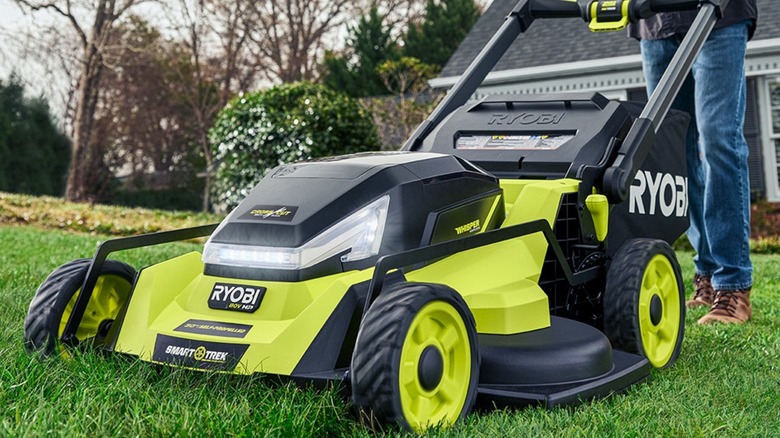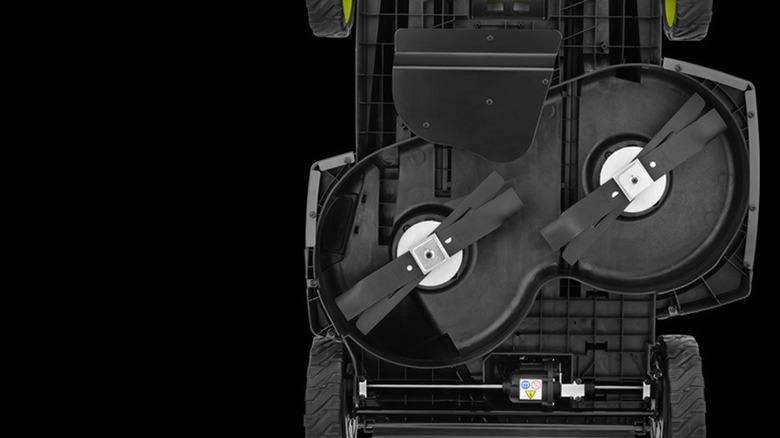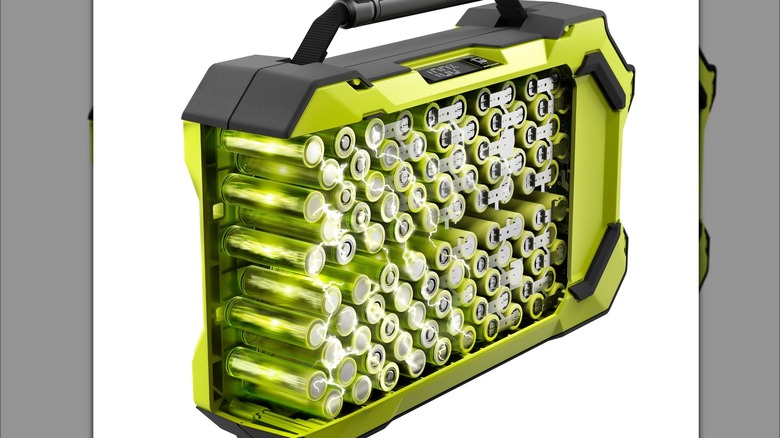How Long Do The Batteries Last In Ryobi's Electric Walk Behind Push Mowers?
Ryobi offers a variety of battery-powered walk-behind push mowers. Options range from the smallest 13-inch-cut push mower powered by an 18V ONE+ Ryobi battery to 40V 20- and 21-inch-cut models and 80V 30-inch-cut self-propelled multi-blade mowers.
Battery life can be thought of in two distinct ways. One is how long the mower will operate when starting with a fully charged battery, and the other is how long it will last before you have to buy new batteries. One of the biggest problems with batteries is they become less efficient with use. However, simple maintenance like properly cleaning your Ryobi lawn mower and using the proper battery charger could help extend battery life.
The first question depends on the width of the lawn mower's cutting blade, system voltage, and the stored amp-hours of the included battery. For example, the 18V ONE+ 13-inch Push Mower Kit includes one 18V 4-amp-hour battery to provide up to 30 minutes of runtime. Compare that to the 80V Brushless 30-inch Self-Propelled Multi-Blade Mower Kit, the most powerful battery lawn mower Ryobi makes, listed at 90 minutes of runtime with its 80V 10-amp-hour battery.
In the absence of defects or abuse, the question of how long the battery will last before a replacement is needed depends on the number of charge cycles the battery undergoes. This is why Ryobi lawn mower battery warranties differ in length between the occasionally used personal mower and the commercial mower that sees more frequent charging.
Factors affecting lawn mower battery runtime
It won't come as a surprise that the same mower/battery combination returns different runtime depending on whether you're using it to mulch thick, wet grass or trim dry, wispy blades in a cool, high-desert climate.
Other key considerations revolve around the battery's storage potential and the mower's electrical demands due to extra features. One apples-to-apples comparison involves two 20-inch 40V Ryobi walk-behind mowers. While both feature identical 40V batteries with 6-amp-hours of storage, the self-propelled version has a listed runtime of 40 minutes compared to the push mower's 45 minutes.
Another Ryobi push mower, a 21-inch multi-blade model, comes with either a single 7.5-amp-hour battery providing 50 minutes of runtime or a dual 6-amp-hour setup with 70 minutes of runtime. Interestingly, Ryobi offers the dual 6-amp-hour battery configuration in several walk-behind mower models. In addition to the 21-inch multi-blade push mower, other dual-battery 21-inch mowers include self-propelled single- and multi-blade options, all with 70 minutes of runtime.
The battery-powered Ryobi walk-behind push mower with the longest runtime is the 80V 30-inch self-propelled multi-blade model. Its 80-volt battery provides 10 amp hours of storage to deliver an estimated 90 minutes of runtime, enough to mow one acre of grass, according to Ryobi.
How long do Ryobi walk-behind lawn mower batteries last?
Ryobi doesn't include data concerning its battery's predicted maximum number of charge cycles with its lawn mowers; however, the battery warranty gives some indication of the projected lifespan. Ryobi 18V ONE+ and 40V batteries are covered by a limited three-year warranty that protects the original owner against defects in materials or workmanship. The larger 80V Ryobi batteries are protected under warranty for five years from the original purchase date and have similar coverage. While the 40V and 80V warranties have language limiting coverage for commercial use, the 18V ONE+ battery warranty found online does not.
Battery University says battery manufacturers may "take a conservative approach" when estimating a maximum number of Lithium-Ion battery charge cycles, providing values between 300 and 500 for consumer goods. Even at the lowest value, a lawn mower battery that's recharged from a depleted state once per week could last nearly six years.
Newark Electronics published Tektronix data that agrees with the 300 to 500 charge cycle estimate for Lithium-Ion batteries. However, the document cautions against letting stored batteries completely discharge by checking them periodically and recharging them as needed. The publication also mentions that the expected lifespan could drop to two or three years for batteries that are often recharged following shallow discharges. Lithium-ion batteries should be replaced if their runtime drops below 80 percent of the original runtime or if recharge times increase significantly.


